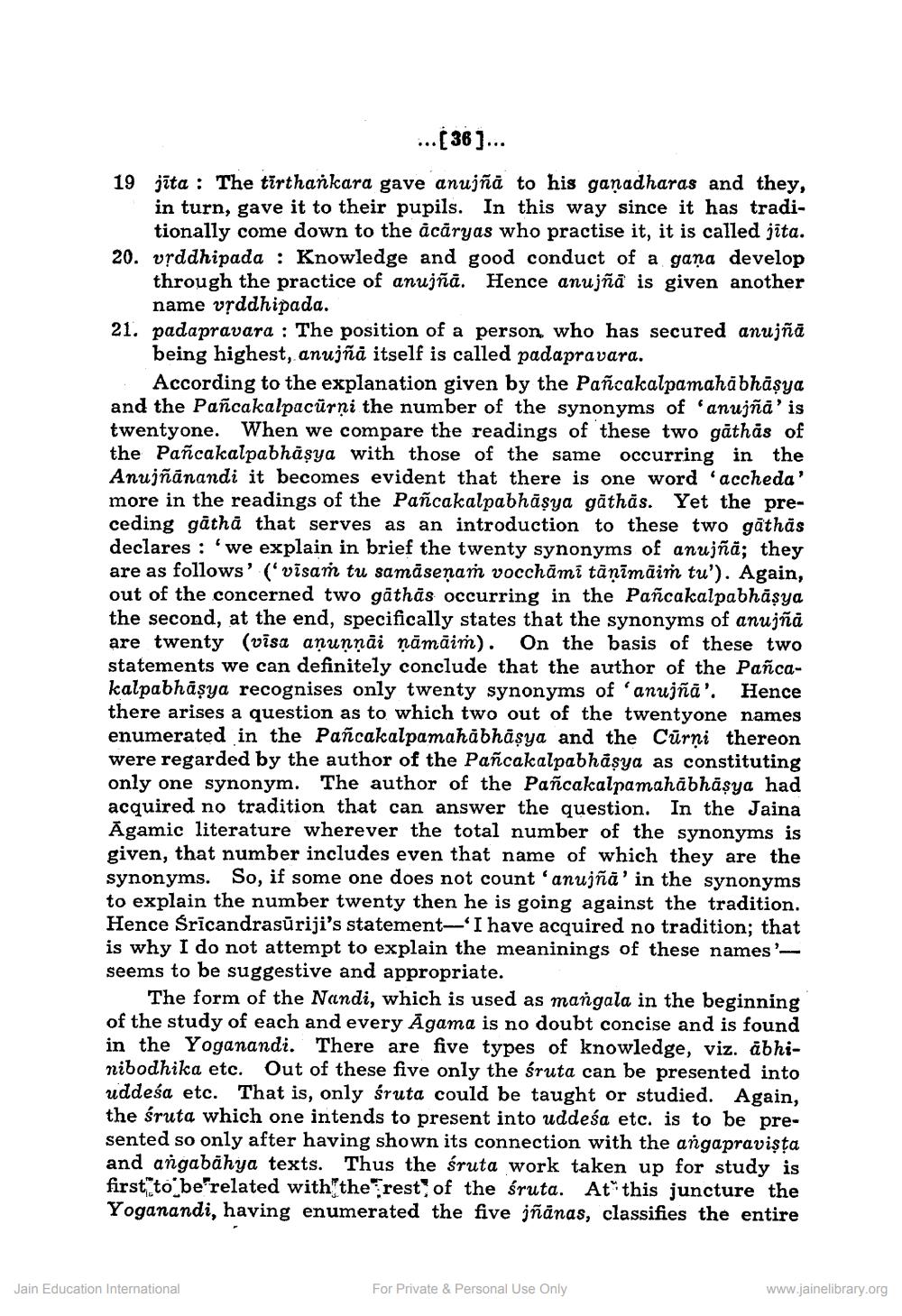________________
...[36]...
19 jīta : The tirthankara gave anujñā to his ganadharas and they,
in turn, gave it to their pupils. In this way since it has tradi
tionally come down to the acāryas who practise it, it is called jita. 20. vệddhipada : Knowledge and good conduct of a gana develop
through the practice of anujña. Hence anujñā is given another
name vśddhipada. 21. padapravara : The position of a person who has secured anujñā
being highest, anujñà itself is called padapravara.
According to the explanation given by the Pañcakalpamahābhāşya and the Pañcakalpacūrņi the number of the synonyms of "anujña' is twentyone. When we compare the readings of these two gāthas of the Pañcakalpabhäsya with those of the same occurring in the Anujñānandi it becomes evident that there is one word 'accheda' more in the readings of the Pañcakalpabhāsya gathās. Yet the preceding gāthà that serves as an introduction to these two gāthas declares : 'we explain in brief the twenty synonyms of anujñā; they are as follows' ('visam tu samasenam vocchāmi tänīmais tu'). Again, out of the concerned two gāthās occurring in the Pañcakalpabhāsya the second, at the end, specifically states that the synonyms of anujña are twenty (visa anunnai ņāmāim). On the basis of these two statements we can definitely conclude that the author of the Pancakalpabhäşya recognises only twenty synonyms of 'anujñā'. Hence there arises a question as to which two out of the twentyone names enumerated in the Pañcakalpamahābhāsya and the Cūrni thereon were regarded by the author of the Pancakalpabhâsya as constituting only one synonym. The author of the Pañcakalpamahābhāsya had acquired no tradition that can answer the question. In the Jaina Āgamic literature wherever the total number of the synonyms is given, that number includes even that name of which they are the synonyms. So, if some one does not count 'anujñā' in the synonyms to explain the number twenty then he is going against the tradition. Hence Śricandrasūriji's statement-'I have acquired no tradition, that is why I do not attempt to explain the meaninings of these names'seems to be suggestive and appropriate.
The form of the Nandi, which is used as mangala in the beginning of the study of each and every Agama is no doubt concise and is found in the Yoganandi. There are five types of knowledge, viz. abhinibodhika etc. Out of these five only the śruta can be presented into uddesa etc. That is, only śruta could be taught or studied. Again, the śruta which one intends to present into uddeśa etc. is to be presented so only after having shown its connection with the angapravista and angabähya texts. Thus the śruta work taken up for study is first to be related with the rest of the śruta. At this juncture the Yoganandi, having enumerated the five jñānas, classifies the entire
Jain Education International
For Private & Personal Use Only
www.jainelibrary.org




